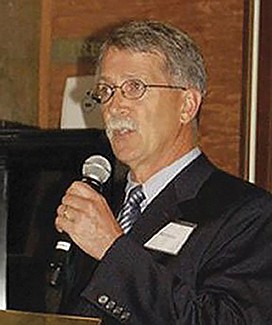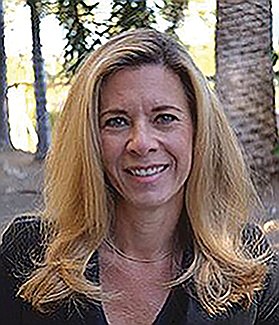 Facebook
Facebook
 X
X
 Instagram
Instagram
 TikTok
TikTok
 Youtube
Youtube

From the cradle onward, we are told to be thrifty. Unfortunately, public utilities do the reverse. They fatten up their bottom lines spending gobs of money on things they don’t need. Pro-utility, anti-consumer regulators reward the profligacy. The overspending begets overproduction of energy. But utilities’ revenue, profits, and stocks go up. Everybody is happy except ratepayers, who pick up the tab.
Yes, utilities’ road to riches is excessive capital spending. This is especially true in this state, where the California Public Utilities Commission is committed to boosting the revenue and profits of the investor-owned utilities — Sempra Energy, Pacific Gas & Electric, and Edison International — and fleecing ratepayers in the process. Those three utilities have among the highest electricity rates in the nation. According to the Southern California Public Power Authority, San Diego Gas & Electric, a unit of Sempra Energy, has rates that can be double those of municipally owned utilities such as those in Los Angeles, Anaheim, Riverside, and Sacramento.
The state utilities commission caps profits at about 10.5 percent of a utility’s assets, such as transmission lines and power plants. So, the way to boost profits is to increase those assets, necessary or not. Regulators authorize higher returns as construction escalates.

“The ratepayer gets hosed,” says Bill Powers of San Diego’s Powers Engineering. He regularly testifies against excessive spending by utilities, but the commission, with one eye on Wall Street, permits unneeded plants and lines to be built. It’s double-dealing that involves double-counting. “The ratepayer pays for a plant when it is built by a third party,” says Powers. The plant may be fully utilized and written off. “Then the ratepayer pays again when the plant is sold to San Diego Gas & Electric.”
One of the worst examples is what’s called “affiliate transactions.” This is a parent company building a plant and then selling it to its own operating subsidiary — at a fat profit, often. This kind of hocus-pocus — call it “ledger-demain” — has been heavily criticized, but under Michael Peevey, the president of the commission for a dozen years beginning in 2002, the opposition was squashed. (Peevey, a former president of Southern California Edison, is under criminal investigation for similar transgressions at the commission. He and Edison held illegal, secret meetings to force ratepayers into coughing up for the closing of the San Onofre nuclear plant.)
Powers points to three instances in which Sempra Energy built power plants and sold them to one of its operating units, San Diego Gas & Electric: one was the Desert Star Energy Center in Nevada, formerly called El Dorado; a second was the Palomar Energy Center in Escondido; and a third was the ESJ wind project in Tecate. Sempra agrees that these deals were technically affiliate transactions.
Sempra built Palomar for about $275 million and sold it to its affiliate, SDG&E, for around $450 million, says Powers. The Energy Division of the commission reviews such deals, and it is “notorious for being sympathetic to the utility perspective,” he says. “A lack of oversight is so institutionalized — with the ratepayer getting hosed — that it is standard operating procedure.”
Says Powers, “This is an open scandal, hiding in plain sight. It’s a clear conflict of interest sitting right in front of you.” But the utilities and their handmaiden, the commission, get away with it.
The Utility Reform Network (better known as TURN) of San Francisco cites several examples of the overspend-and-get-rich mentality. Pacific Gas & Electric wanted to build a gas plant in Oakley, California. It would have cost customers $200 million a year, jacking up the utility’s profits. TURN took the matter to court twice and won each time. The reform group also fought utility double-dipping on smart meters. “Utilities received not only guaranteed returns on the smart meters but continued to collect on their investment in analog meters, which were sitting in a trash heap,” says the reform group’s spokesperson, Mindy Spatt.



Then there are electric-vehicle charging stations. San Diego Gas & Electric “wants $103 million to build, own, and operate 5500 charging stations over four years,” says Spatt. This “gives SDG&E too much money for an experimental program that customers will pay for but many will never be able to take advantage of.”
The clandestine way by which the commission and the investor-owned utilities collude to pump up utility profits is exemplified by the handling of the San Onofre decommissioning. Unless there are changes, ratepayers will be billed for 70 percent of the almost $5 billion cost.
“The bigger the disaster, the bigger the error, the more money utilities make,” says San Diego attorney Mike Aguirre, who with his partner Maria Severson is battling the San Onofre decision. “Making mistakes is a good business model.” He says that San Diego Gas & Electric “keeps expanding the number of gas-fired plants it owns, in order to make money for Southern California Gas,” also a Sempra subsidiary that distributes natural gas, now a pariah because of a natural-gas leak at its Aliso Canyon facility in San Fernando Valley. Thousands of citizens of the affluent community of Porter Ranch have had to evacuate.
Ray Lutz of Citizens Oversight points out that “utilities are scared to death of rooftop solar.” That is true. It is much more economical for ratepayers than getting energy directly from utilities. So, the companies do everything they can to thwart the advance of rooftop solar. They build solar farms in the desert. The power comes into metro areas at great expense, and, of course, the utilities can make a bundle on the transmission lines they construct.
Powers estimates that San Diego Gas & Electric is making between $90 million and $100 million a year on the Sunrise Powerlink project, the 117-mile transmission line that brings sun, wind, and geothermal power to San Diego from Imperial Valley. Sempra won’t reveal those numbers.
But “the plethora of geothermal power that could go across Sunrise from Imperial Valley is ignored,” says Severson. SDG&E and regulators have “given lip service to renewable energy but have appeared to forgo the naturally occurring geothermal energy a few miles away” from the Sunrise sources of power.
It’s hypocrisy on steroids, but it is very profitable.


From the cradle onward, we are told to be thrifty. Unfortunately, public utilities do the reverse. They fatten up their bottom lines spending gobs of money on things they don’t need. Pro-utility, anti-consumer regulators reward the profligacy. The overspending begets overproduction of energy. But utilities’ revenue, profits, and stocks go up. Everybody is happy except ratepayers, who pick up the tab.
Yes, utilities’ road to riches is excessive capital spending. This is especially true in this state, where the California Public Utilities Commission is committed to boosting the revenue and profits of the investor-owned utilities — Sempra Energy, Pacific Gas & Electric, and Edison International — and fleecing ratepayers in the process. Those three utilities have among the highest electricity rates in the nation. According to the Southern California Public Power Authority, San Diego Gas & Electric, a unit of Sempra Energy, has rates that can be double those of municipally owned utilities such as those in Los Angeles, Anaheim, Riverside, and Sacramento.
The state utilities commission caps profits at about 10.5 percent of a utility’s assets, such as transmission lines and power plants. So, the way to boost profits is to increase those assets, necessary or not. Regulators authorize higher returns as construction escalates.

“The ratepayer gets hosed,” says Bill Powers of San Diego’s Powers Engineering. He regularly testifies against excessive spending by utilities, but the commission, with one eye on Wall Street, permits unneeded plants and lines to be built. It’s double-dealing that involves double-counting. “The ratepayer pays for a plant when it is built by a third party,” says Powers. The plant may be fully utilized and written off. “Then the ratepayer pays again when the plant is sold to San Diego Gas & Electric.”
One of the worst examples is what’s called “affiliate transactions.” This is a parent company building a plant and then selling it to its own operating subsidiary — at a fat profit, often. This kind of hocus-pocus — call it “ledger-demain” — has been heavily criticized, but under Michael Peevey, the president of the commission for a dozen years beginning in 2002, the opposition was squashed. (Peevey, a former president of Southern California Edison, is under criminal investigation for similar transgressions at the commission. He and Edison held illegal, secret meetings to force ratepayers into coughing up for the closing of the San Onofre nuclear plant.)
Powers points to three instances in which Sempra Energy built power plants and sold them to one of its operating units, San Diego Gas & Electric: one was the Desert Star Energy Center in Nevada, formerly called El Dorado; a second was the Palomar Energy Center in Escondido; and a third was the ESJ wind project in Tecate. Sempra agrees that these deals were technically affiliate transactions.
Sempra built Palomar for about $275 million and sold it to its affiliate, SDG&E, for around $450 million, says Powers. The Energy Division of the commission reviews such deals, and it is “notorious for being sympathetic to the utility perspective,” he says. “A lack of oversight is so institutionalized — with the ratepayer getting hosed — that it is standard operating procedure.”
Says Powers, “This is an open scandal, hiding in plain sight. It’s a clear conflict of interest sitting right in front of you.” But the utilities and their handmaiden, the commission, get away with it.
The Utility Reform Network (better known as TURN) of San Francisco cites several examples of the overspend-and-get-rich mentality. Pacific Gas & Electric wanted to build a gas plant in Oakley, California. It would have cost customers $200 million a year, jacking up the utility’s profits. TURN took the matter to court twice and won each time. The reform group also fought utility double-dipping on smart meters. “Utilities received not only guaranteed returns on the smart meters but continued to collect on their investment in analog meters, which were sitting in a trash heap,” says the reform group’s spokesperson, Mindy Spatt.



Then there are electric-vehicle charging stations. San Diego Gas & Electric “wants $103 million to build, own, and operate 5500 charging stations over four years,” says Spatt. This “gives SDG&E too much money for an experimental program that customers will pay for but many will never be able to take advantage of.”
The clandestine way by which the commission and the investor-owned utilities collude to pump up utility profits is exemplified by the handling of the San Onofre decommissioning. Unless there are changes, ratepayers will be billed for 70 percent of the almost $5 billion cost.
“The bigger the disaster, the bigger the error, the more money utilities make,” says San Diego attorney Mike Aguirre, who with his partner Maria Severson is battling the San Onofre decision. “Making mistakes is a good business model.” He says that San Diego Gas & Electric “keeps expanding the number of gas-fired plants it owns, in order to make money for Southern California Gas,” also a Sempra subsidiary that distributes natural gas, now a pariah because of a natural-gas leak at its Aliso Canyon facility in San Fernando Valley. Thousands of citizens of the affluent community of Porter Ranch have had to evacuate.
Ray Lutz of Citizens Oversight points out that “utilities are scared to death of rooftop solar.” That is true. It is much more economical for ratepayers than getting energy directly from utilities. So, the companies do everything they can to thwart the advance of rooftop solar. They build solar farms in the desert. The power comes into metro areas at great expense, and, of course, the utilities can make a bundle on the transmission lines they construct.
Powers estimates that San Diego Gas & Electric is making between $90 million and $100 million a year on the Sunrise Powerlink project, the 117-mile transmission line that brings sun, wind, and geothermal power to San Diego from Imperial Valley. Sempra won’t reveal those numbers.
But “the plethora of geothermal power that could go across Sunrise from Imperial Valley is ignored,” says Severson. SDG&E and regulators have “given lip service to renewable energy but have appeared to forgo the naturally occurring geothermal energy a few miles away” from the Sunrise sources of power.
It’s hypocrisy on steroids, but it is very profitable.
Comments